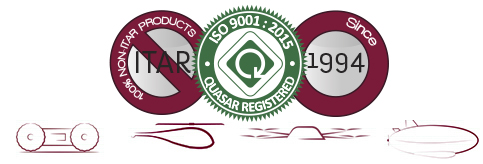Forget the Moon, How About Mars
August 2, 2002
Can you imagine, as part of your job, you are assigned to a base camp on Mars? Well not exactly Mars--but the closest thing Earth has to Mars--which is the Haughton Impact Crater on Devon Island, Nunavut. "Mars on Earth" is located 2,843 kilometres north of Winnipeg and 372 kilometres southeast of the magnetic North Pole. That is exactly where 26 year old Paul Chambers, Senior Technician with MicroPilot, spent 7 exciting days as part of the research team on the NASA Haughton Mars Project. On July 17, scientists from NASA, along with the Planetary Society and Paul Chambers representing MicroPilot landed at Devon Island for their very unique operation. Devon Island is a treeless polar desert as large as the state of West Virginia. Its climate, remoteness, rugged landscape, and lack of human population make it a good analog for Mars. Paul's responsibility involved operating 3 miniature airplanes developed by MicroPilot called the Xtra Easy Unmanned Aerial Vehicle (UAV), to take video images of Devon Island's large crater site. Since 1995, Winnipeg based MicroPilot has been designing miniature autopilots using low cost COTS GPS receivers and mems rate sensors. MicroPilot sells autopilots worldwide to academic, military, and private research institutions.
The UAV team will fly the autonomous craft over a variety of terrains, exploring Devon Island's arid landscape from the air just as scientists hope they may one day explore Mars with autonomous aircraft" says Bruce Betts, Planetary Society Director of Projects.
You might ask: where does one stay while on Mars? Well, it is a good thing Paul is an outdoorsman, because in addition to bringing MicroPilot miniature planes, he had to bring his own tent and gear. Just like on Mars, on Devon Island in July, the sun never sets. It was all part of Paul's amazing opportunity:
"My visit to Devon Island was probably the most interesting assignment that I've had. First, the terrain on the island and in Haughton Crater itself is unlike anything I have ever seen - mostly rolling hills of rock and gravel broken up by gullies and riverbeds, with nearly non-existent plant or animal life. The second thing that was so great about this trip was the people. Actually every one of the 30 or so researchers and camp staff could be described as being enthusiastic and dedicated people. There was a definite feeling of community at the camp, and it was great to be a part of it."
In conclusion, it just goes to show that a local high tech company can be part of a NASA project that is "out of the world".
Read latest news | Back previous page

